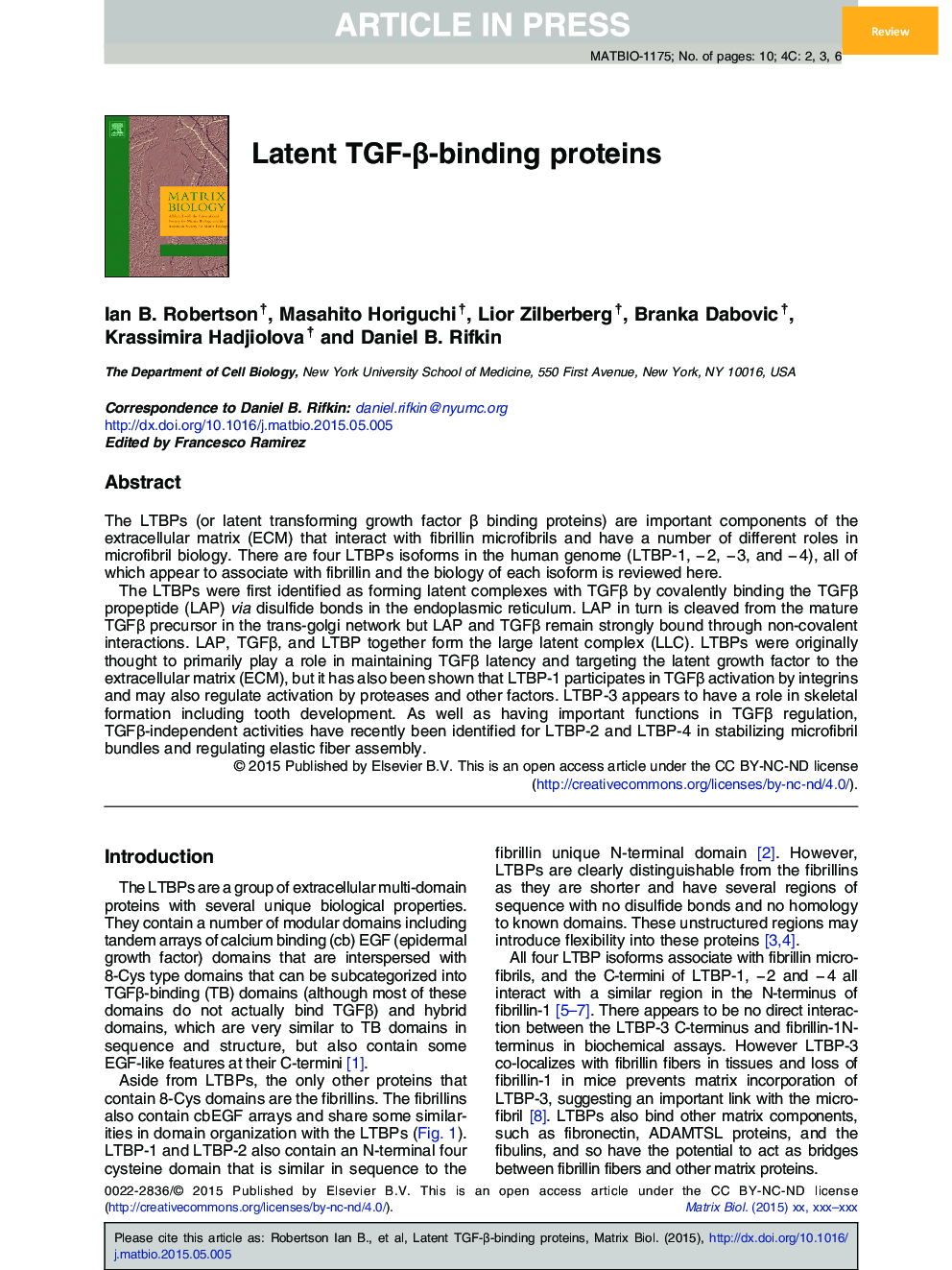| Article ID | Journal | Published Year | Pages | File Type |
|---|---|---|---|---|
| 8455202 | Matrix Biology | 2015 | 10 Pages |
Abstract
The LTBPs were first identified as forming latent complexes with TGFβ by covalently binding the TGFβ propeptide (LAP) via disulfide bonds in the endoplasmic reticulum. LAP in turn is cleaved from the mature TGFβ precursor in the trans-golgi network but LAP and TGFβ remain strongly bound through non-covalent interactions. LAP, TGFβ, and LTBP together form the large latent complex (LLC). LTBPs were originally thought to primarily play a role in maintaining TGFβ latency and targeting the latent growth factor to the extracellular matrix (ECM), but it has also been shown that LTBP-1 participates in TGFβ activation by integrins and may also regulate activation by proteases and other factors. LTBP-3 appears to have a role in skeletal formation including tooth development. As well as having important functions in TGFβ regulation, TGFβ-independent activities have recently been identified for LTBP-2 and LTBP-4 in stabilizing microfibril bundles and regulating elastic fiber assembly.
Related Topics
Life Sciences
Biochemistry, Genetics and Molecular Biology
Cancer Research
Authors
Ian B. Robertson, Masahito Horiguchi, Lior Zilberberg, Branka Dabovic, Krassimira Hadjiolova, Daniel B. Rifkin,
